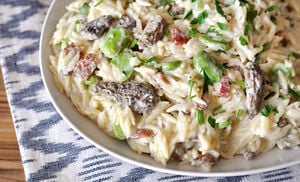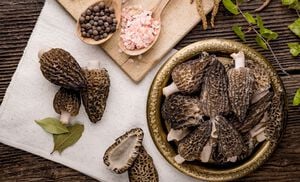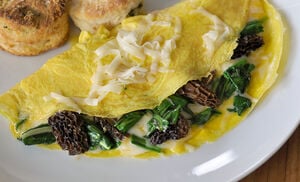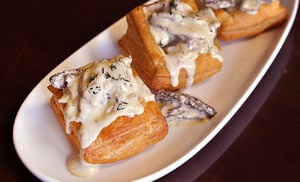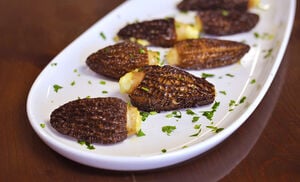Morel Mushrooms
-
In StockRequires delivery by Fri Jun 27 2025
Fresh morel mushrooms, wild foraged in the Pacific Northwest for a limited season. With their distinctive shape and honeycombed caps, morels are one of the most recognizable of the wild edibles. Prized among the Morchella genus, these dark “burn morels” grow in the wake of forest fires. Morel mushrooms are a source of passion and culinary wonder, inspiring recipes, and annual festivals across the U.S. Part of what makes morels so beloved is the fact that they can be rare and hard to find. Known as a chef's mushroom, their opulent, earthy flavor lends itself to wonderful, rich sauces. You may also enjoy morels simply sautéed with butter and a splash of wine to finish. Morel season begins in spring, and they are found in diminishing quantities throughout the summer. As the season progresses, the characteristics of the morel develop and change in interesting and compelling ways.
Also Available:
Dried Morel Mushrooms
- Wild-foraged mushrooms
- Seasonally available
- Morchella sextelata, Morchella septimelata
- After harvest and trimming, they are sifted and air blasted to clean
- Sizes vary
- Allergen: Contains mushrooms
- Product of the USA
- For best taste, store in the refrigerator and use within 3-5 days of receipt
Cooking Methods: Sauté, Braise, Stew, Stuff, Roast, cook en Papiotte
Morels are highly perishable, so keep refrigerated at all times. Cleaning morels takes a little patience because of their honeycomb texture. As these are a wild, foraged mushroom, there may be uninvited visitors nestled inside. Trim the end of the stem off and brush lightly if you notice any grit. If extremely gritty, a quick rinse in cold water followed by immediate drying on a tea towel will be necessary. Larger morels should be cut in half lengthwise to clean out the center of the stem. Leave smaller morels whole. Try to have uniform size in the pan, so that the mushrooms cook evenly. Do not eat morels raw. Morels are complemented best by butter and cream, so sauté briefly in butter then add a splash of white wine and finish with a quick simmer in heavy cream. Morels are wonderful with chicken, veal or pork.
D'Artagnan offers a variety of wild and cultivated fresh mushrooms and truffles year round. For wild mushrooms, we partner with foragers and follow the seasons around the world. In addition, expert cultivators grow organic mushrooms for us in pristine and optimal conditions. We also preserve the flavors of the season with our dried mushroom offerings.
Our truffles are foraged seasonally in France and Italy, and when those are done we source farmed truffles from Australia, which lengthens the season for these fragrant delicacies.






